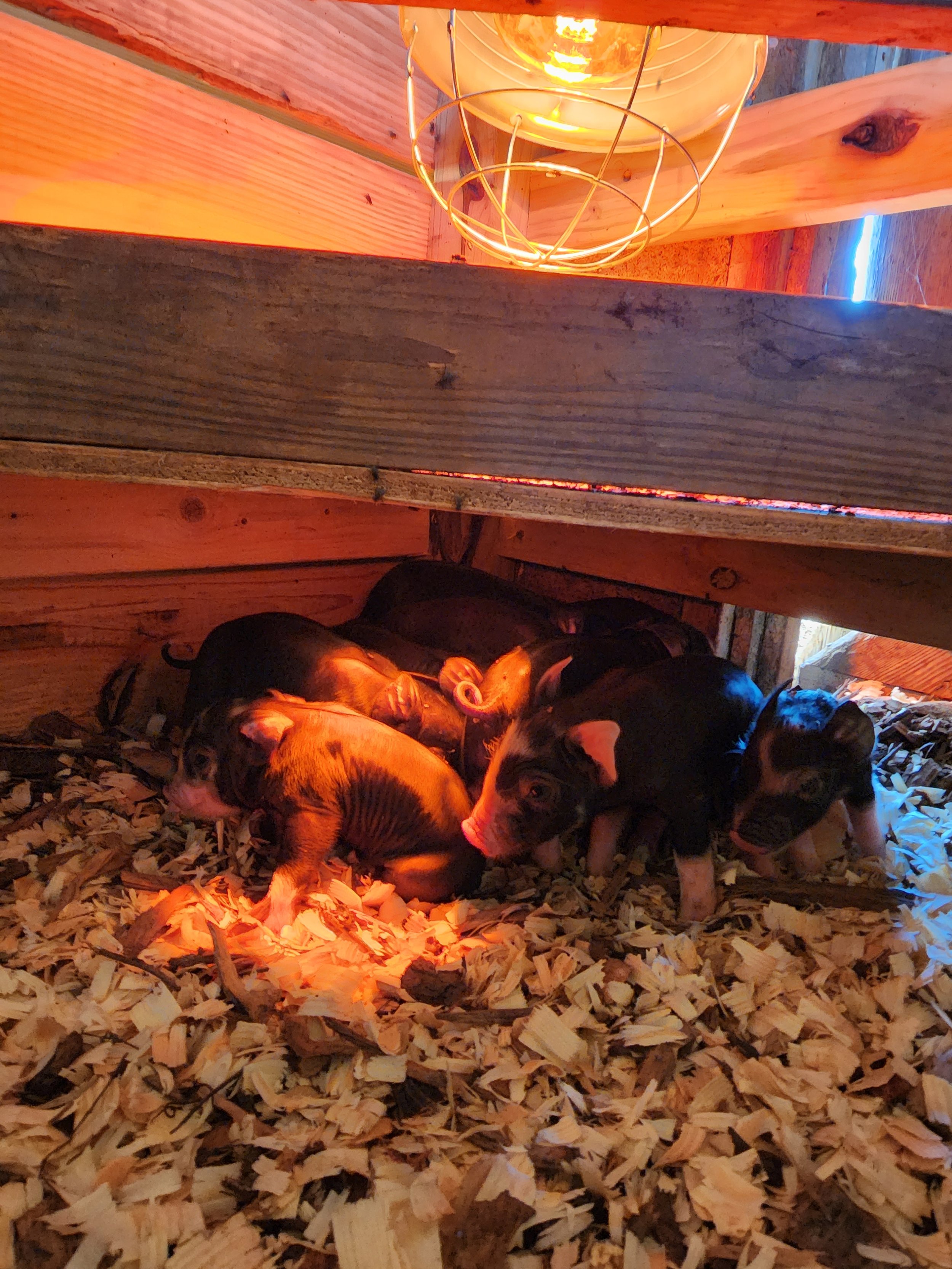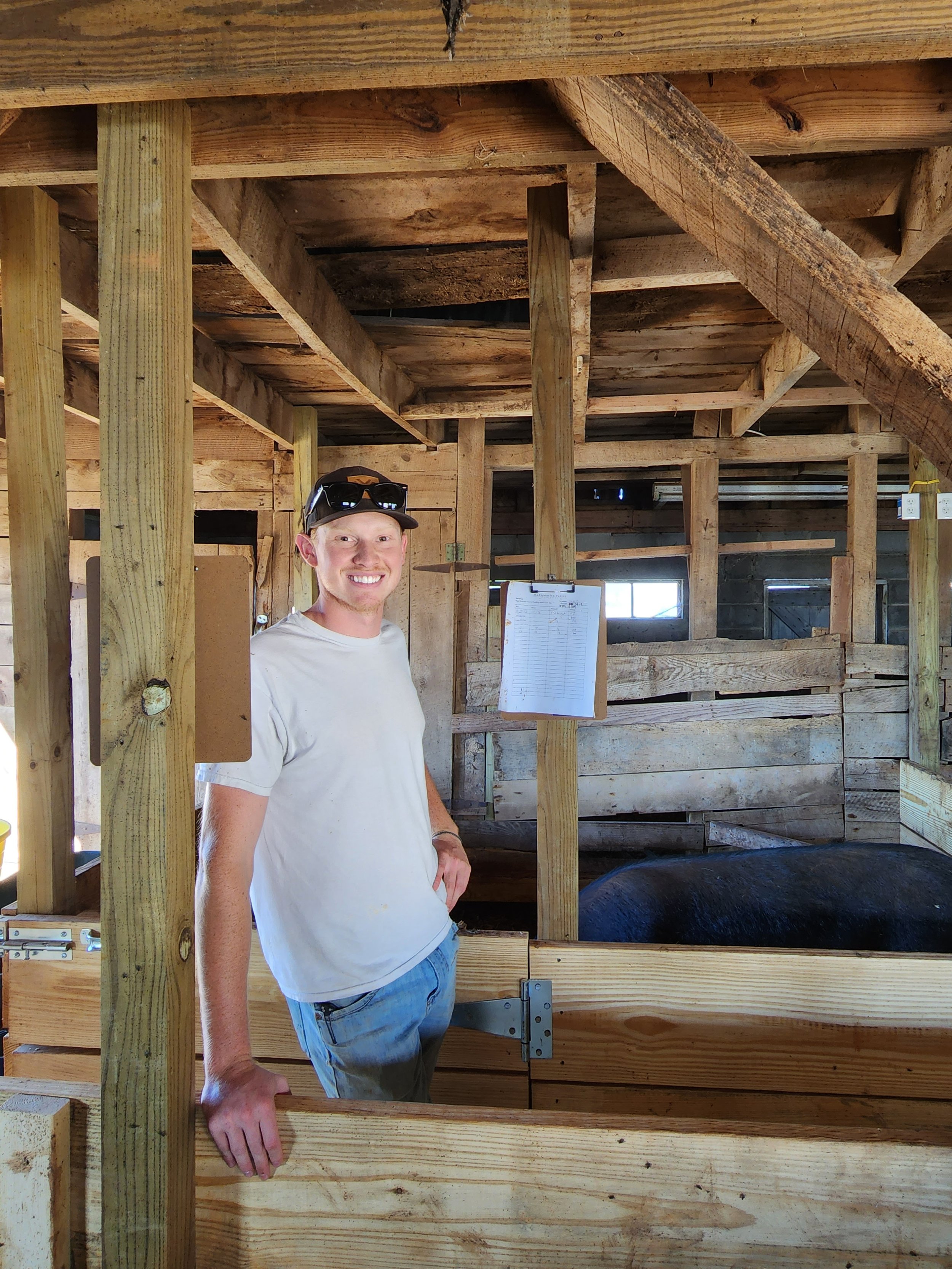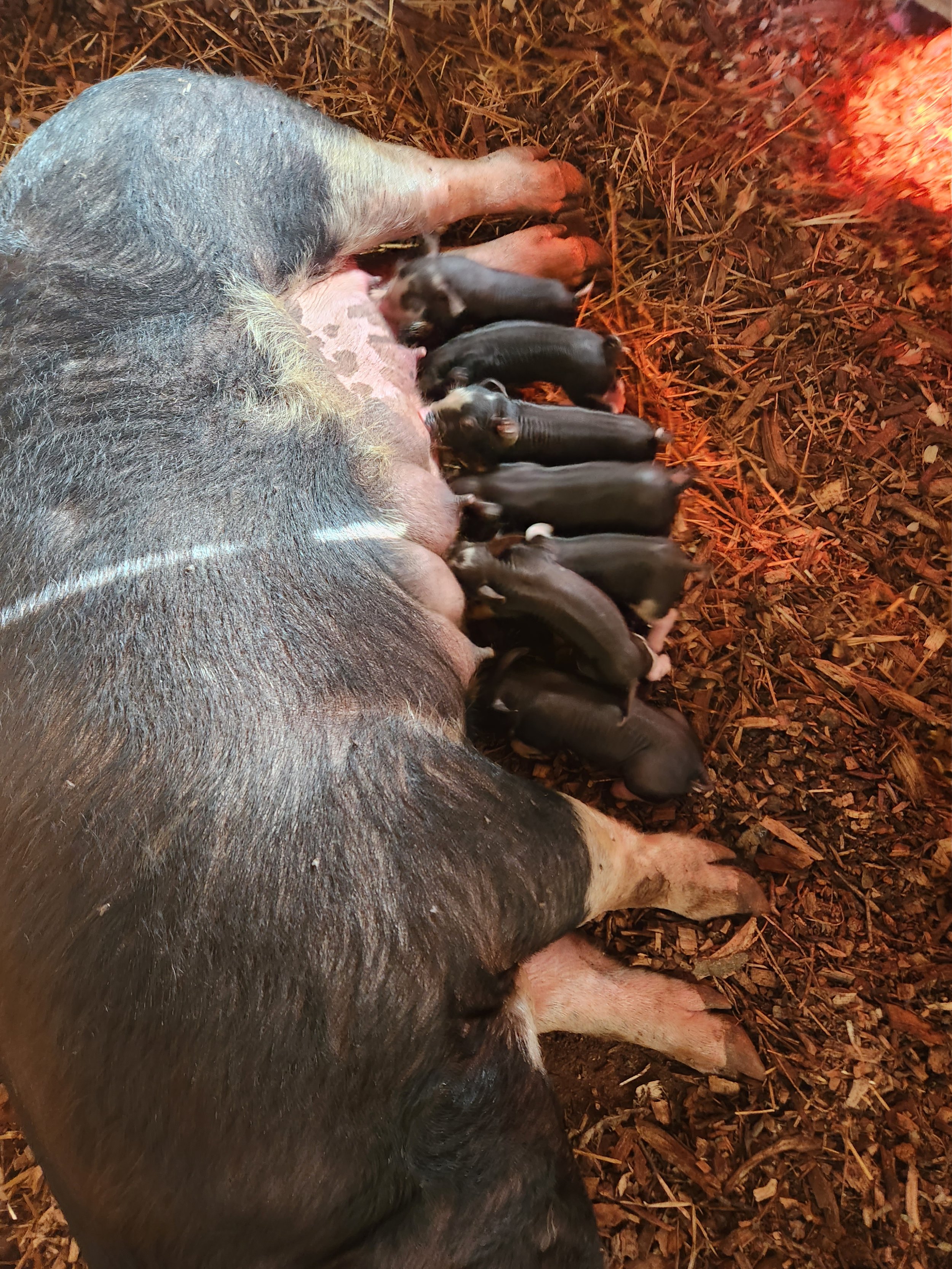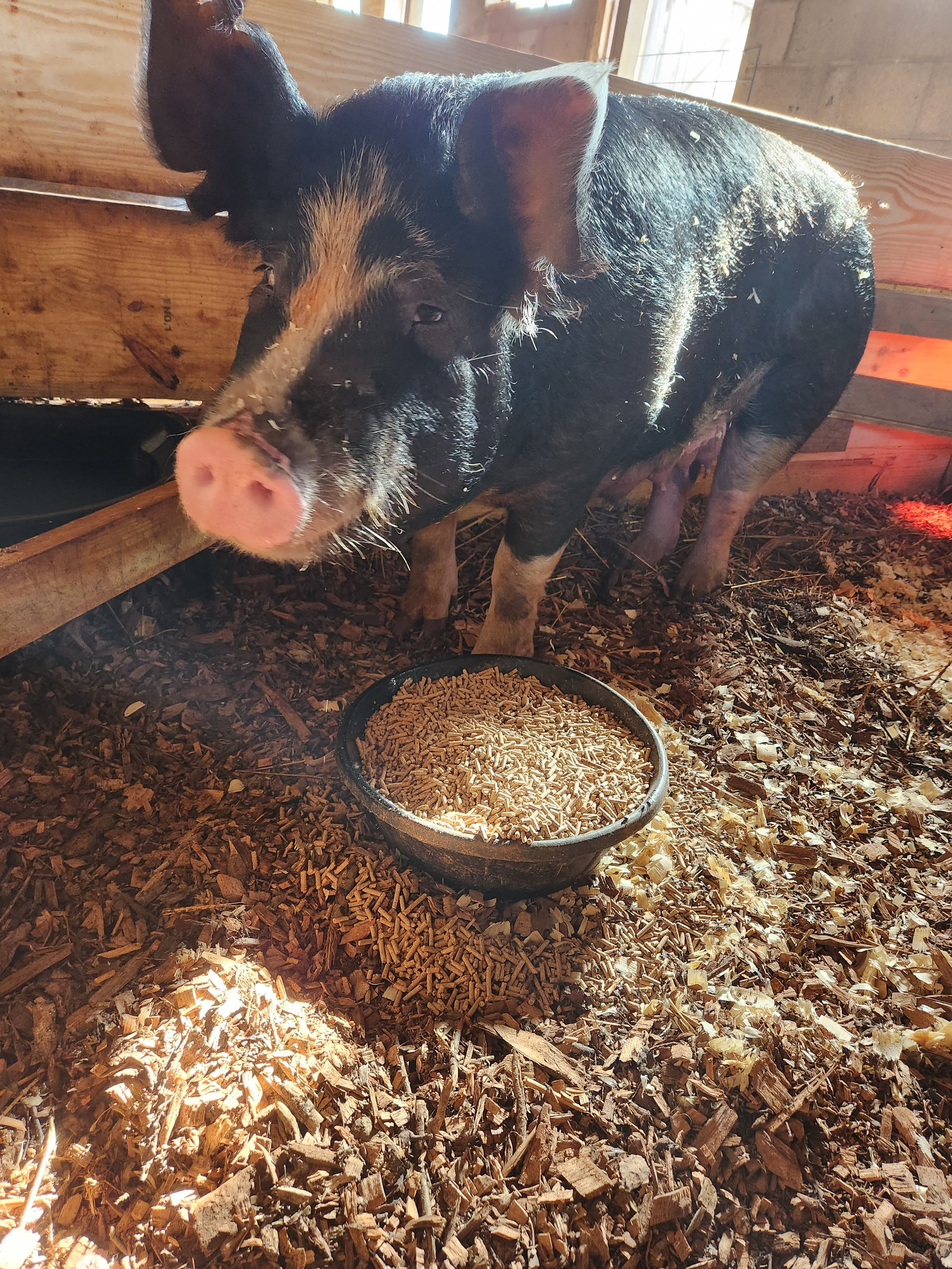Birthing Berkshire
Welcoming Berkshire
Our team recently brought 7 pregnant Berkshire Sows to our farm. Heading into the winter, we knew that we needed to get them a space built up and we needed to do it quickly. When the pigs first arrived to the farm, we placed them in an electric fence lined field that we needed the pigs to work. Pigs tend to dig, scrounge up roots, and eat foliage off of young trees, this can keep land as a field if you see it getting a little overgrown. Our farm has plenty of space that could use the help of pigs, and they turned it over, making it better field for our cattle in the future.
While they were in the field, our team came up with a strategy to turn an old barn into their farrowing space. We were contemplating between using farrowing cages and using farrowing pins. Farrowing cages are large, ribbed cages that keep the sow in a confined space during the birthing and upbringing process. Sows with young piglets tend to be a bit testy, so having them confined can be safer for your workers. Not only that, sows can accidentally crush their new piglets- having a farrowing cage prevents that from happening. Farrowing stalls are different in that the mother has space to move around. Our farrowing stalls are about 7 ft x 11 ft and offer the mother space to move freely. They are designed to have a wall guard - a 4 in. wood buffer that allows the piglets to escape if the mother is laying down against the wall. Along with the guards, the stall also has a corner dedicated to the piglets - a space that the mother cannot get into that has a heat lamp and comfy pine bedding. Having a source of heat is crucial while they are still young. We built these stalls in an old barn on the property that once held random pieces of wood and plumbing equipment. It was nice to use a space that already existed on the property.
Piglets
Pigs are pregnant for 3 months, 3 weeks, and 3 days. When they first arrived to the property, we created a google calendar with all of their farrowing dates so that we would not be surprised. In case of early birthing, we moved the pigs to their farrowing stalls 1 week before their farrowing date. We wanted to avoid having piglets in the field and wanted the sows to get used to the space before introducing their piglets to it. To move these large animals, we trained them to eat on the trailer, making it easy for us to back it to their pin, add food, and get them to travel. We also designed the farrowing stalls to have tight aisles so the pigs, once in the barn, went directly into their stalls. You can see in the image on the right that are farrowing stalls are constructed from wood, have a corner area for the water, and have the guard on the long walls.
Our first sow farrowed on November 2nd to 9 healthy piglets. Unfortunately, one was still-born but we were excited to welcome 9 into the world. The piglets quickly found their footing int he space and we replaced the larger, sharper wood chips (from trees fallen on the property) to pine shavings. This helped absorb some of the urine a bit better and gave a softer space for the piglets to thrive. The second night, the sow did crush one of the piglets. Sad as we were, it was a learning curve in how these particular mothers were going to behave in the space. The other 8 piglets are thriving, they quickly found their safe area and can be found huddling under the heart lamp when they aren’t pestering their mother for food.
Daily Chores and Looking Ahead
We clean the stalls daily, makings sure to remove the bedding material that has any waste on it. this helps with fly populations and keeps them nice and clean. We also feed them once a day with a pelleted feed made specifically for them. We clean and fill their water in the morning and then top it off as we head out for the day. Keeping the stalls is important to keep both the pigs and ourselves happy.
We keep track of all the feedings on a clip board attached to each of the farrowing stalls. The other pigs have their farrowing dates written on those clipboards so the team knows which one is due next. It takes us a little under 2 hours every day to take care of all of them, this includes cleaning the aisle as well. I also try to find time to go in and brush them - they’re little dance as you find a spot that was itchy is too cute to pass up on.
The next step for our farm is to create safe habitat for the pigs in wooded areas. We want them to have access to all the incredible seeds and nuts that fall in the Virginia Forests. We plan on expanding soon and giving these little piglets a new home out there once they are big enough for their next adventure. As the pigs make that space their home, we are going to purposefully plant more nut bearing trees to round our their diet even more.
If you are interested in pre-ordering some Berkshire pork, please contact us at info@maranathafarms.com.





